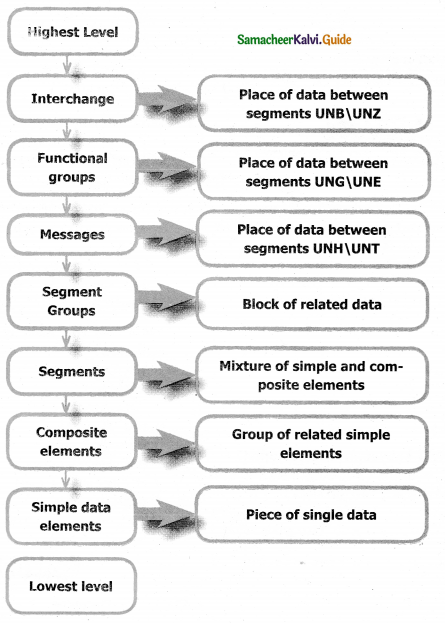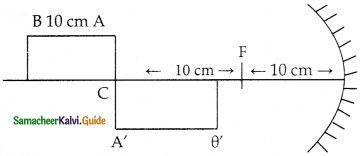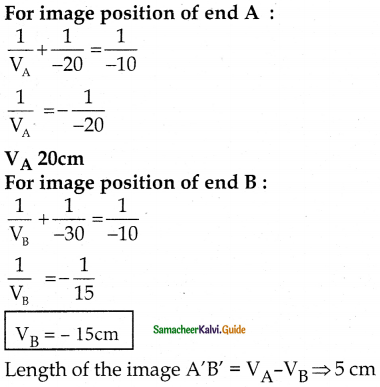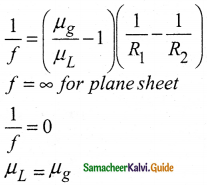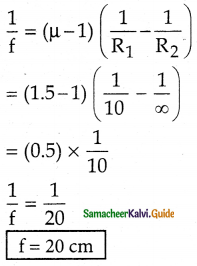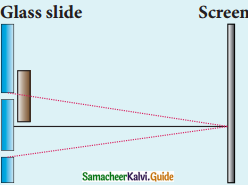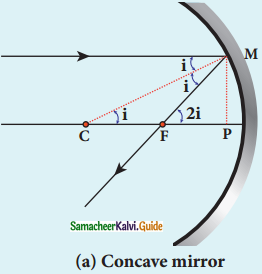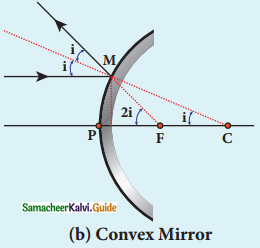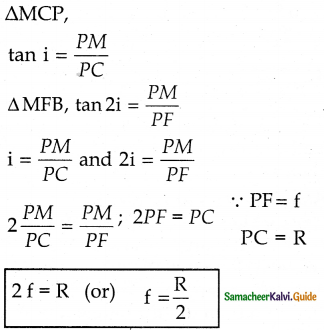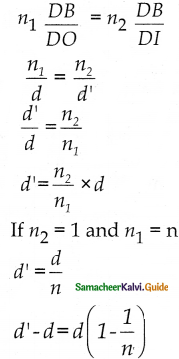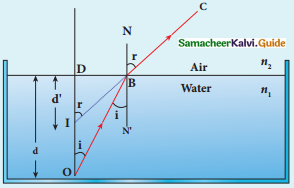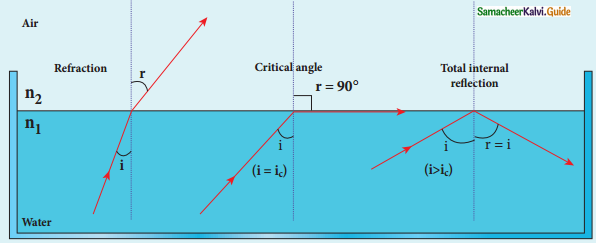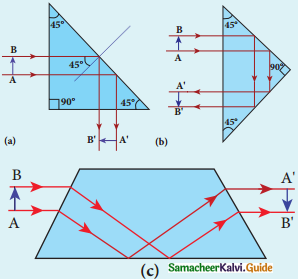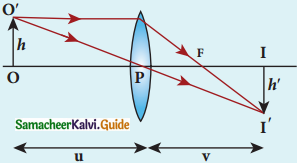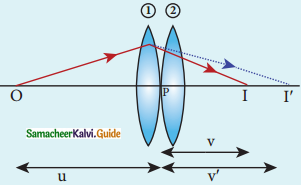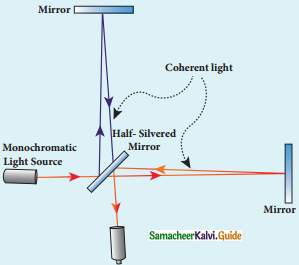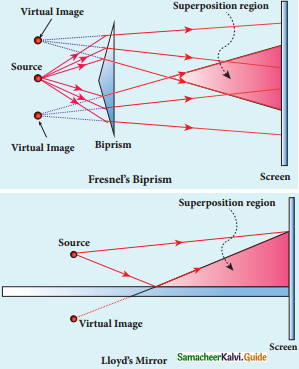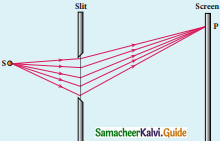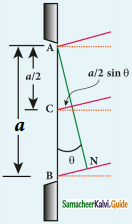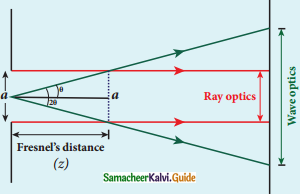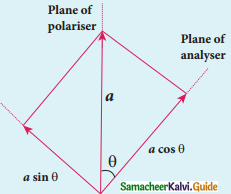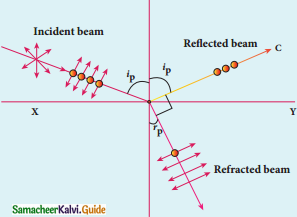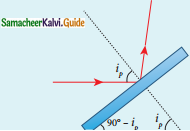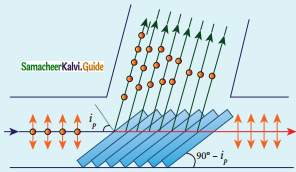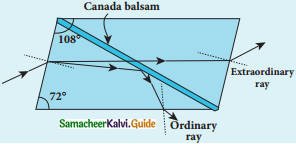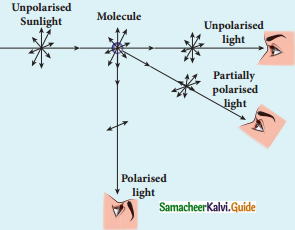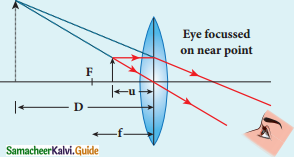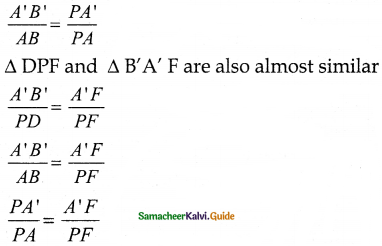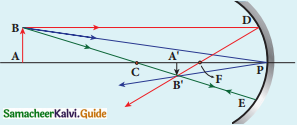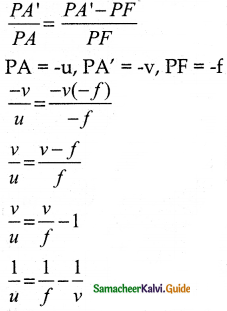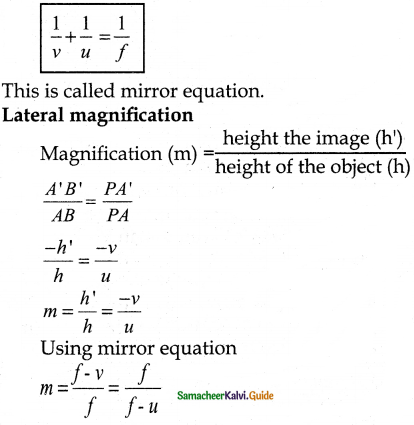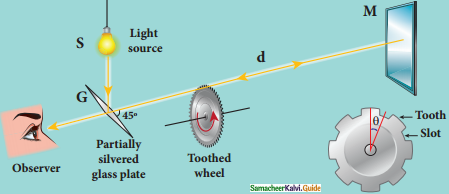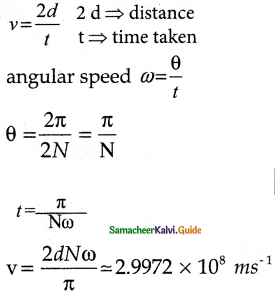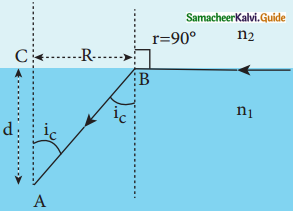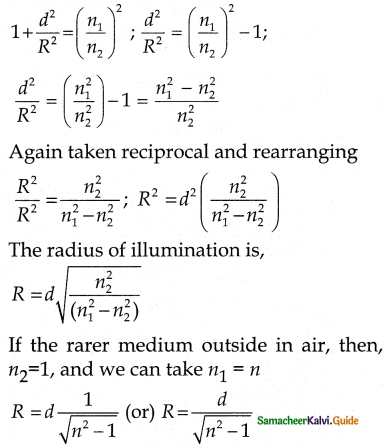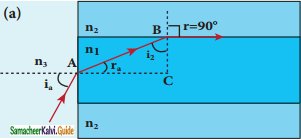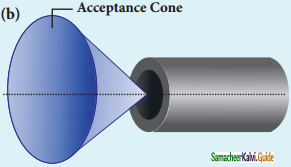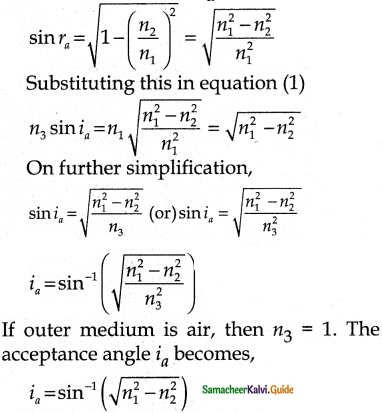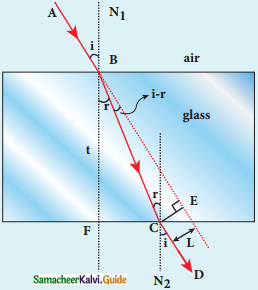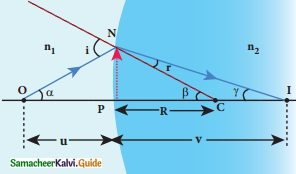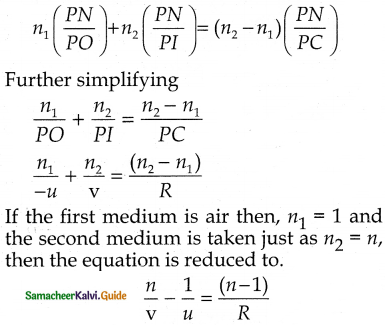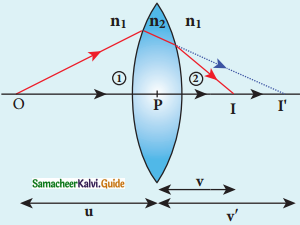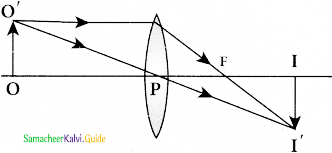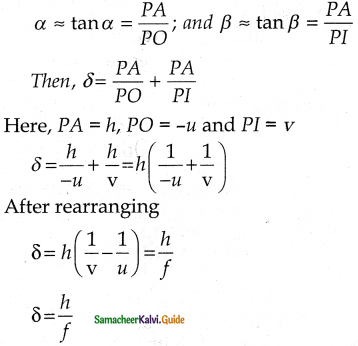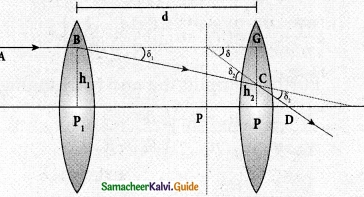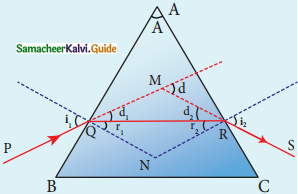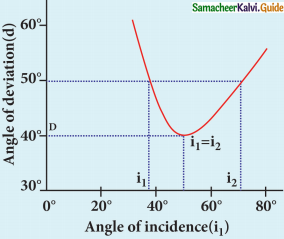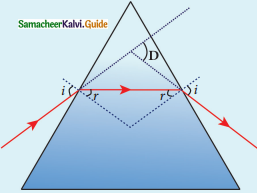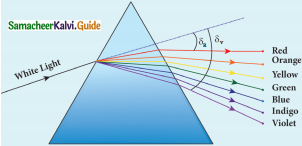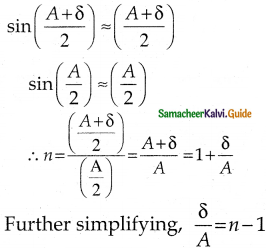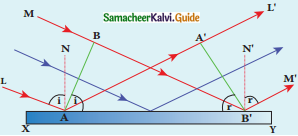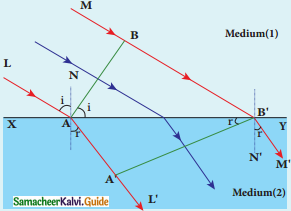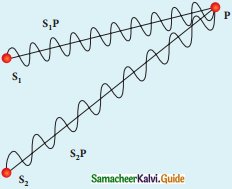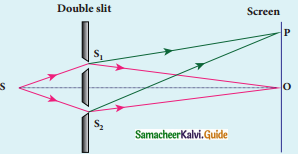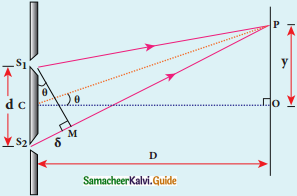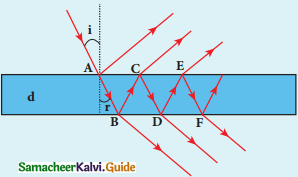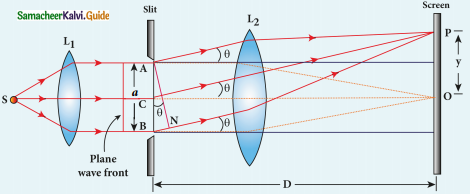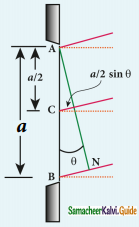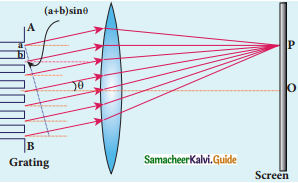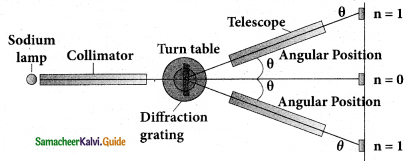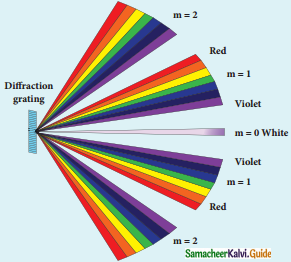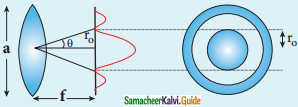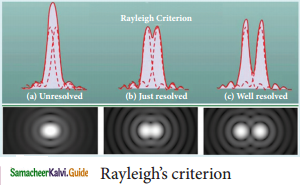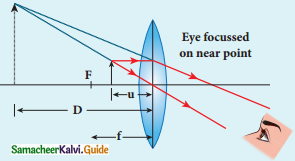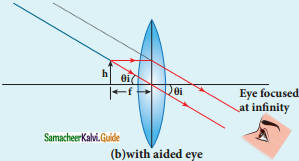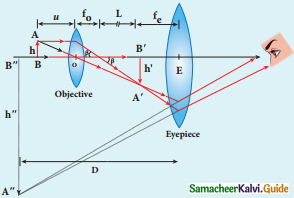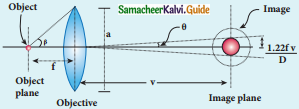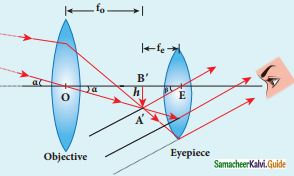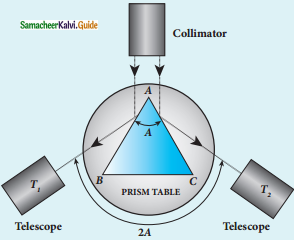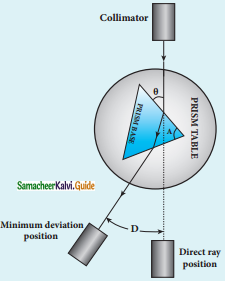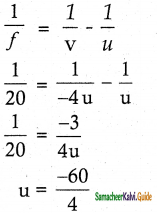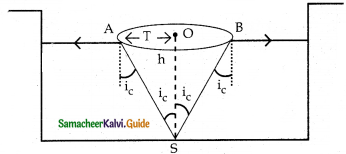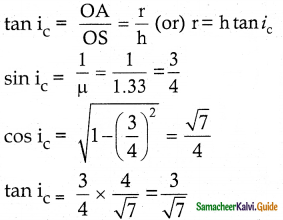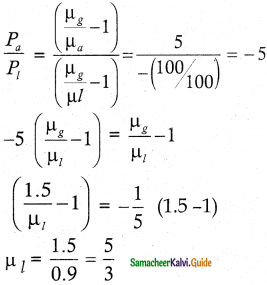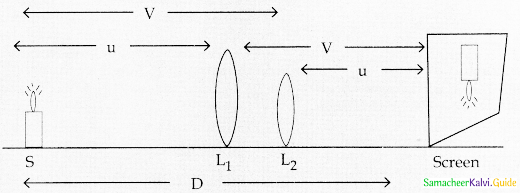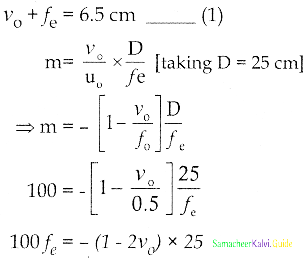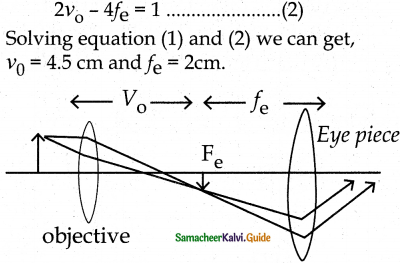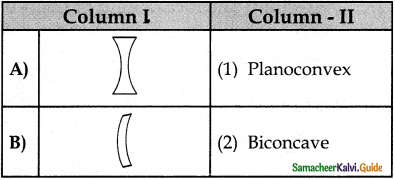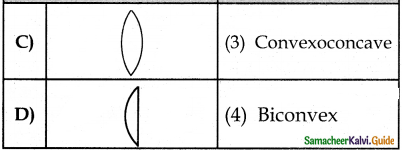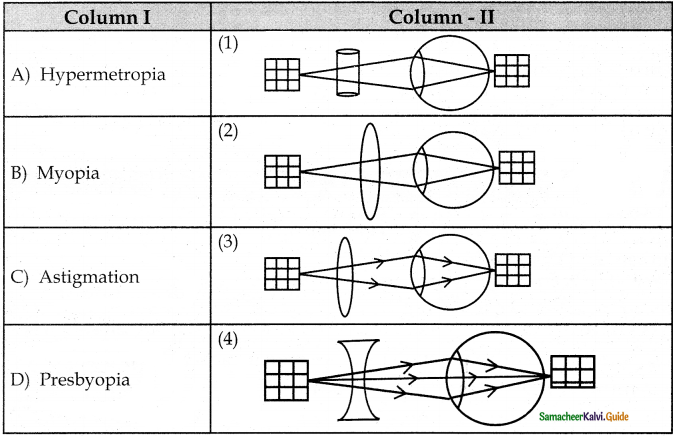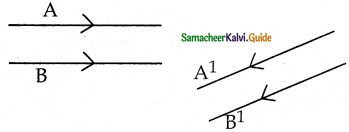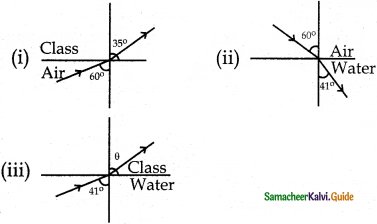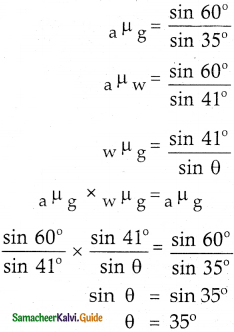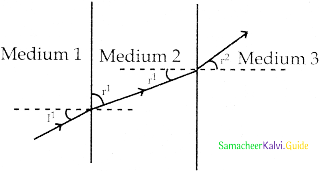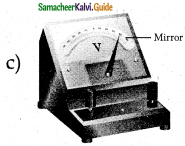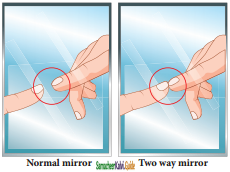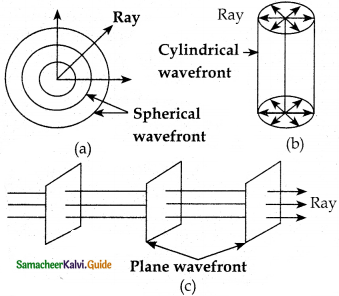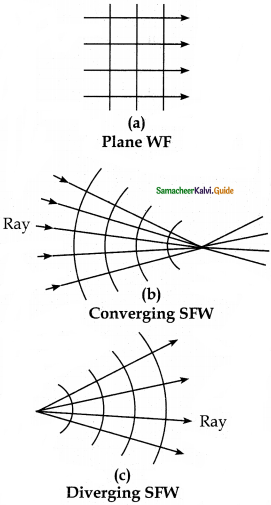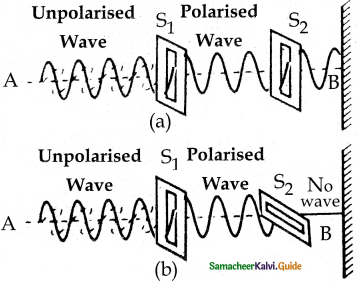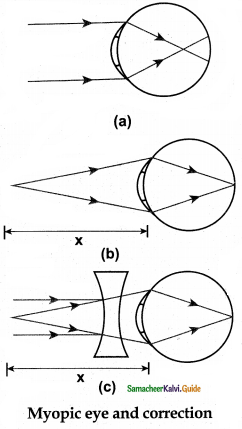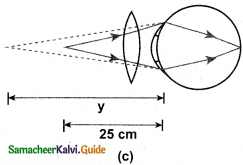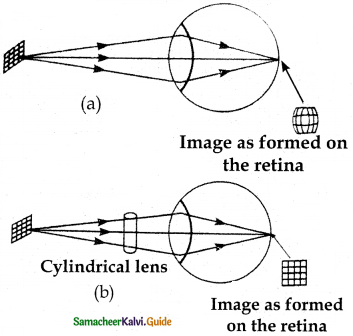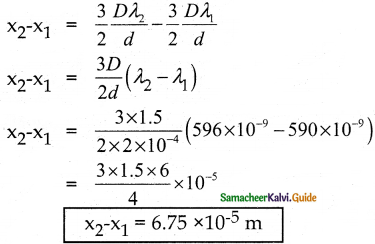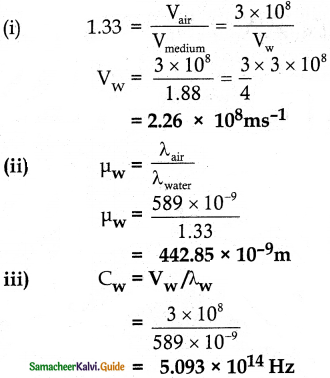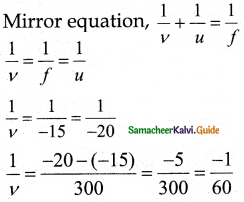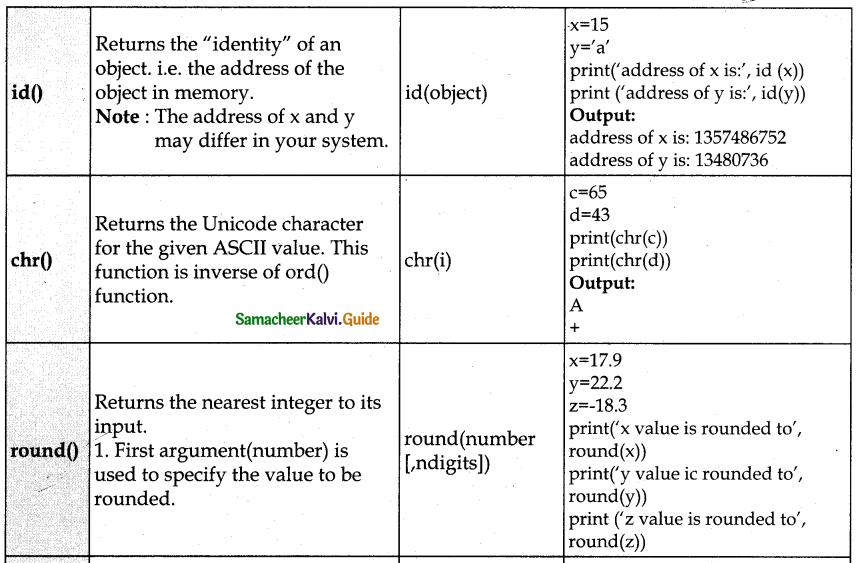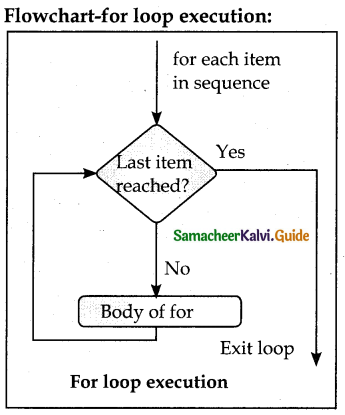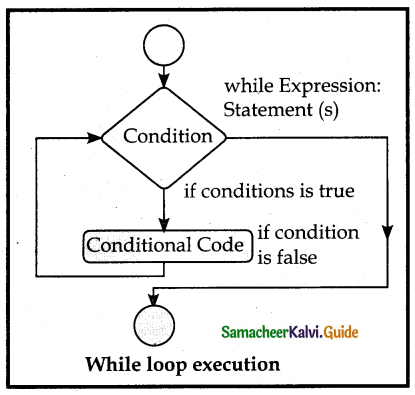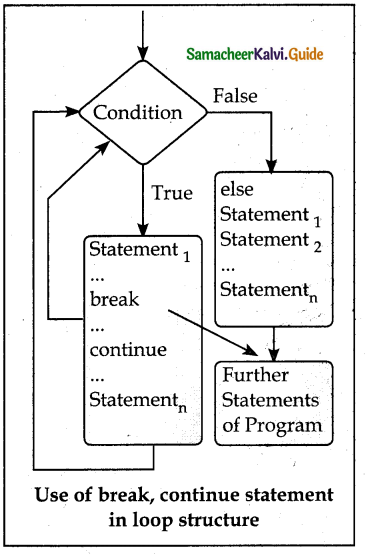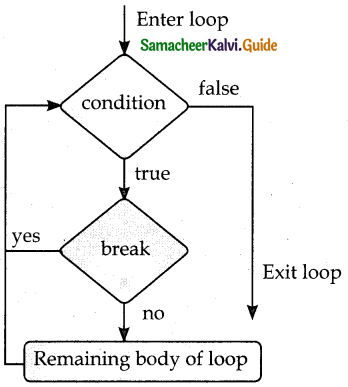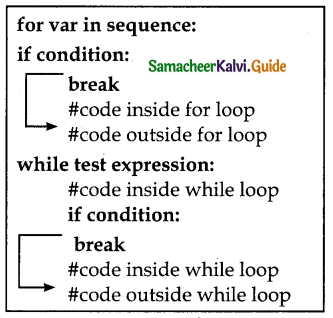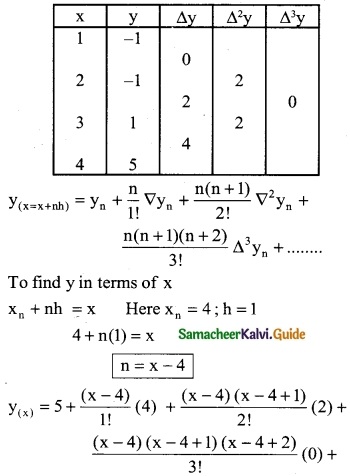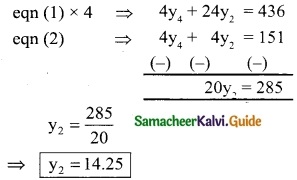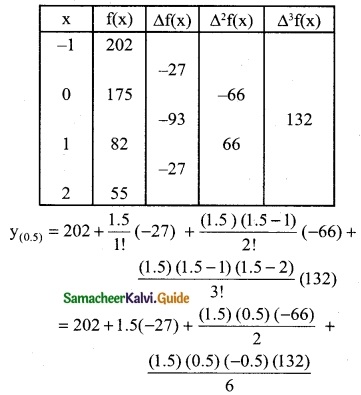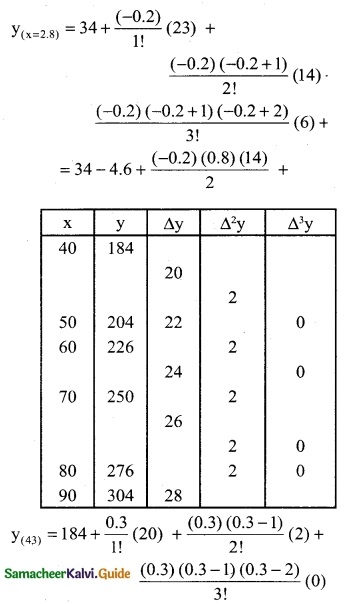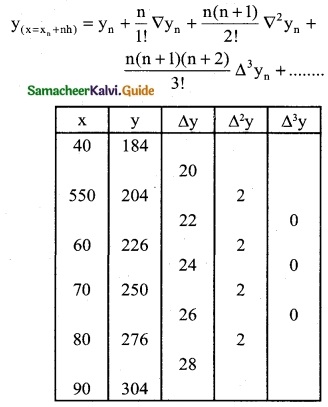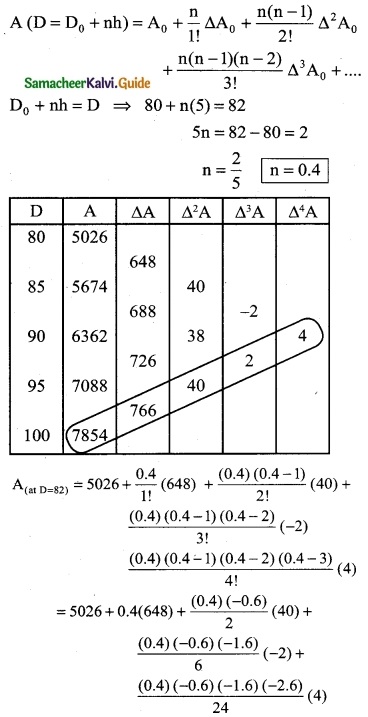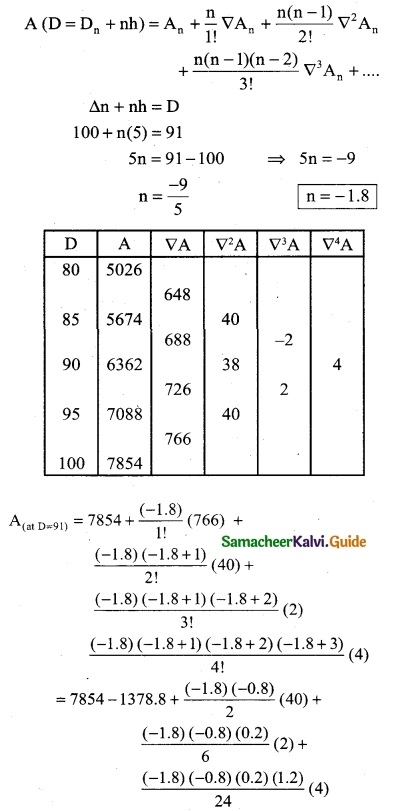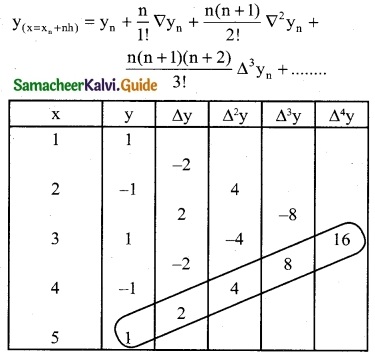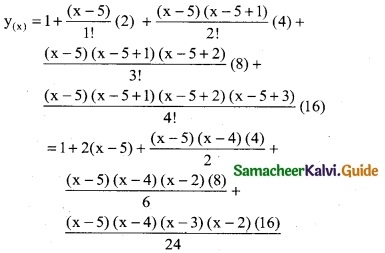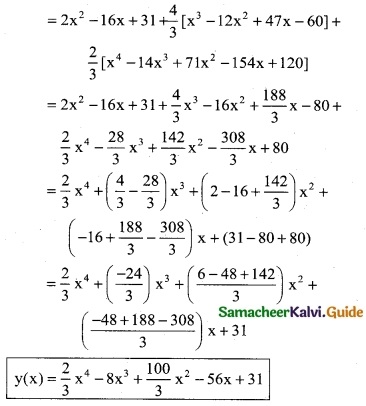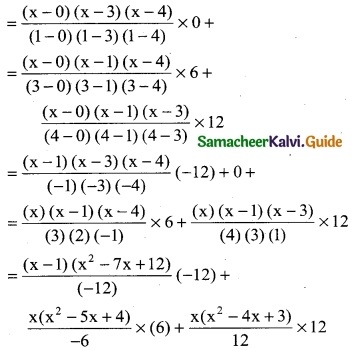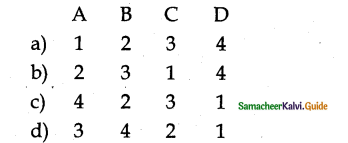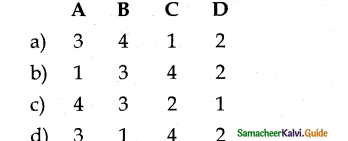Tamilnadu State Board New Syllabus Samacheer Kalvi 12th Economics Guide Pdf Chapter 10 Environmental Economics Text Book Back Questions and Answers, Notes.
Tamilnadu Samacheer Kalvi 12th Economics Solutions Chapter 10 Environmental Economics
12th Economics Guide Environmental Economics Text Book Back Questions and Answers
PART- A
Multiple Choice questions
Question 1.
The term environment has been derived from a French word ………………..
a) Environ
b) Environs
c) Environia
d) Envir
Answer:
c) Environia
Question 2.
The word biotic means environment
a) living
b) non – living
c) physical
d) None of the above
Answer:
a) living
![]()
Question 3.
Ecosystem is smallest unit of
a) Ionosphere
b) Lithosphere
c) Biosphere
d) Mesosphere
Answer:
c) Biosphere
Question 4.
Who developed Material Balance Models?
a) Thomas and Picardy
b) Alenkneese and R.V.Ayres
c) Joan Robinson and J.M.Keynes
d) Joseph Stiglitz and Edward Chamberlin
Answer:
d) Joseph Stiglitz and Edward Chamberlin
![]()
Question 5.
Environmental goods are ……………
a) Market goods
b) Non – market goods
c) Both
d) None of the above
Answer:
b) Non – market goods
Question 6.
In a pure public good, consumption is ……………..
a) Rival
b) Non – rival
c) Both
d) None of the above
Answer:
a) Rival
![]()
Question 7.
One of the most important market failures is caused by …………………………..
a) Positive externalities
b) Negative externalities
c) Both
d) None of the above
Answer:
b) Negative externalities
Question 8.
The common source of outdoor air pollution is caused by combustion processes from the following ……………..
a) Heating and cooking
b) Traditional stoves
c) Motor vehicles
d) All the above
Answer:
b) Traditional stoves
![]()
Question 9.
The major contributor of Carbon monoxide is
a) Automobiles
b) Industrial process
c) Stationary fuel combustion
d) None of the above
Answer:
a) Automobiles
Question 10.
Which one of the following causes of global warming?
a) Earth gravitation force
b) Oxygen
c) Centripetal force
d) Increasing temperature
Answer:
d) Increasing temperature
![]()
Question 11.
Which of. the following is responsible for protecting humans from harmful ultraviólet rays? .
a) UV-A
b) UV-C .
c) Ozone layer
d) None of the above
Answer:
c) Ozone layer
Question 12.
Global warming also refers to as
a) Ecological change
b) Climate Change
c) Atmosphere changé
d) None of the above
Answer:
d) None of the above
![]()
Question 13.
Which of the following is the anticipated effect of Global Warming?
a) Rising sea levels
b) Changing precipitation
c) Expansion of deserts
d) All of the above
Answer:
b) Changing precipitation
Question 14.
The process of nutrient enrichment is termed as
a) Eutrophication
b) Limiting nutrients
c) Enrichment
d) Schistosomoasis
Answer:
b) Limiting nutrients
![]()
Question 15.
Primary cause of Soil pollution is ……………..
a) Pest control measures
b) Land reclamation
c) Agricultural run off
d) Chemical fertilizer
Answer:
d) Chemical fertilizer
Question 16.
Which of the following is main cause for deforestation?
a) Timber harvesting industry
b) Natural afforestation
c) Soil stabilization
d) Climate stabilization
Answer:
a) Timber harvesting industry
![]()
Question 17.
Electronic waste is commonly referred as ……………….
a) Solid waste
b) Composite waste
c) e- waste
d) Hospital waste
Answer:
c) e- waste
Question 18.
Acid rain is one of the consequences of ………………………………… Air pollution
a) Water Pollution
b) Land pollution
c) Noise pollution
Answer:
a) Water Pollution
![]()
Question 19.
Sustainable Development Goals and targets are to be achieved by …………………….
a) 2020
b) 2025
c) 2030
d) 2050
Answer:
c) 2030
Question 20.
Alkali soils are predominantly located in the ……………………… plains?
a) Indus-Ganga
b) North-Indian
c) Gangetic plains
d) All the above
Answer:
d) All the above
PART -B
Answer the following questions in one or two sentences.
Question 21.
State the meaning of environment.
Answer:
- The meaning of Environmental Economics is a different branch of economics that recognizes the value of both the environment and economic activity and makes choices based on those values.
- The goal is to balance the economic activity and the environmental impacts by taking into account all the costs and benefits.
- In short, Environmental Economics is an area of economics that studies the financial impact of environmental issues and policies.
- Environmental Economics involves theoretical and empirical studies of the economic effects of national or local environmental policies around the world.
Question 22.
What do you mean by ecosystem?
Answer:
The ecosystem is the interacting system of a biological community and its non living environmental surroundings.
![]()
Question 23.
Mention the countries where per capita carbon dioxide emission is the highest in the world.
Answer:
- United States of America – (USA)
- Europian Union – (EU)
- Japan
- Russian Federation
- United Arab Emirates (UAE)
- Saudi Arabia
- China
Question 24.
What are environmental goods? Give examples.
Answer:
Environmental goods are typically non – market goods.
Eg: Rivers, Forests, Mountains
![]()
Question 25.
What are the remedial measures to control noise pollution?
Answer:
Remedial measures to control Noise Pollution
- Use of noise barriers
- Newer roadway for surface transport
- Traffic control
- Regulating times for heavy vehicles
- Installations of noise barriers in the workplace
- Regulation of Loudspeakers
Question 26.
Define Global warming.
Answer:
Global warming is the increase in temperature of the Earth’s surface , due to greenhouse gases.
Question 27.
Specify the meaning of seed ball.
Answer:
- A seed ball (or seed bomb) is a seed that has been wrapped in soil materials, usually a mixture of clay and compost, and then dried.
- Essentially, the seed is ‘pre-planted’ and can be sown by depositing the seed ball anywhere suitable for the species, keeping the seed safely until the proper germination window arises.
- Seed balls are an easy and sustainable way to cultivate plants that provide a larger window of time when the sowing can occur.
PART -C
Answer the following questions in one paragraph
Question 28.
Brief the linkage between economy and environment.
Answer:
- Man’s life is interconnected with various other living and non-living things. The life also depends on social, political, ethical, philosophical and other aspects of the economic system.
- In fact, the life of human beings is shaped by his living environment. The relationship between the economy and the environment is explained in the form of a ‘Material Balance Model’.
Question 29.
Specify the meaning of material balance principle.
Answer:
- The Material Balance Model was developed by Alenkneese and R.V.Ayres. It explains the relationship between the economy and the environment. The model considers the total economic process as a physically balanced flow between inputs and outputs.
- The first law of thermodynamics emphasizes that in any production system ” what goes in must come out” and this is known as the Material Balance Approach.
![]()
Question 30.
Explain different types of air pollution.
Answer:
Types of Air pollution:
1. Indoor Air Pollution:
It refers to toxic contaminants that we encounter in our daily lives in our homes, schools and workplaces. For example, cooking and heating with solid fuels on open fires or traditional stoves results in high levels of indoor air pollution.
2. Outdoor Air Pollution:
It refers to ambient air. The common sources of outdoor air pollution are caused by combustion processes from motor vehicles, solid fuel burning and industry.
Question 31.
What are the causes of water pollution?
Answer:
Water pollution is caused due to several reasons. Few are:
- Discharge of sewage and wastewater.
- Dumping of solid wastes.
- Discharge of industrial wastes.
- Oil spill
- Acid rain
- Global warming
- Eutrophication.
Question 32.
State the meaning of e-waste.
Answer:
1. Electronic waste which is commonly referred as “e-waste” is the new byproduct of the Info-Tech society.
2. It is a physical waste in the form of old discarded, end of life electronics.
3. It includes a broad and growing range of electronic devices from large household appliances such as refrigerators, air conditioners, cellular phones, computers and other electronic goods”.
4. Similarly, e-waste can be defined as the result when consumer, business and household devices are disposed or sent for re-cycling (example, television, computers, audio-equipments, VCR, DVD, telephone, Fax, Xerox machines, wireless devices, video games, other households electronic equipment).
![]()
Question 33.
What is land pollution? Mention the causes of land pollution.
Answer:
Land pollution is defined as,” the degradation of land because of the disposal of waste on the land” Any substance that is discharged, emitted or deposited in the environment in such a way that it alters the environment causes land pollution.
Causes:
- Deforestation and Soil erosion
- Agricultural Activities
- Mining Activities
- Land fills
- Industrialization
- Construction activities
- Nuclear waste.
Question 34.
Write a note on a) Climate change and b) Acid rain Climate Change:
Answer:
(a) Climate Change:
1. climate change refers to seasonal changes over a long period with respect to the growing accumulation of greenhouse gases in the atmosphere.
2. Recent studies have shown that human activities since the beginning of the industrial revolution, have contributed to an increase in the concentration of carbon dioxide in the atmosphere by as much as 40%, from about 280 parts per million in the pre-industrial period, to 402 parts per million in 2016, which in turn has led to global warming.
3. Several parts of the world have already experienced the warming of coastal waters, high temperatures, a marked change in rainfall patterns, and increased intensity and frequency of storms. Sea levels and temperatures are expected to be rising.
(b) Acid Rain:
- Acid rain is one of the consequences of air pollution.
- It occurs when emissions from factories, cars or heating boilers contact with the water in the atmosphere.
- These emissions contain nitrogen oxides, sulphur dioxide and sulphur trioxide which when mixed with water become sulfurous acid, nitric acid and sulfuric acid.
- This process also occurs by nature through volcanic eruptions.
- It can have harmful effects on plants, aquatic animals and infrastructure.
PART -D
Answer the following questions in about a page.
Question 35.
Briefly explain the relationship between GDP growth and the quality of environment.
Answer:
- Environmental quality is a set of properties and characteristics of the environment either generalized or local, as they impinge on human beings and other organism.
- Environmental quality has been continuously declining due to capitalistic mode of functioning.
- Environment is a pure public good that can be consumed simultaneously by everyone and from which no one can be excluded.
- Pure public goods pose a free rider problem. As a result, resources are depleted.
- The contribution of the nature to GDP as well as depletion of natural resources are not accounted in the present system of National Income Enumeration.
- In Environmental Economics one of the most important market failures is caused by negative externalities arising from production and consumption of goods and services.
- Externality may be defined as ” the cost or benefit imposed by the consumption and production activities of the individuals in these activity and towards which no payment is made.
- Beneficial externalities are called “Positive externalities” and adverse ones are called ” negative externalities”.
- As these externalities occur outside of the market ie) they affect people not directly involved in the production and consumption of a good or service.
- These externalities both positive and negative are not included in GDP. If proper calculation is made including positive and negative externalities the correlation between GDP growth and environmental quality can be assessed.
![]()
Question 36.
Explain the concepts of externality and its classification Externality:
Answer:
Externalities refer to external effects or spillover effects resulting from the act of production or consumption on the third parties. Externalities arise due to interdependence between economic units.
Positive Consumption Externality:
When some residents of a locality hire a private security agency to patrol their area, the other residents of the area also benefit from better security without bearing cost.
Negative Consumption Externality:
A person smoking cigarette gets may gives satisfaction to that person, but this act causes hardship (dissatisfaction) to the non – smokers who are driven to passive smoking.
Positive Production Externality:
- The ideal location for beehives is orchards (first growing fields).
- While bees make honey, they also help in the pollination of apple blossoms.
- The benefits accrue to both producers (honey as well as apple). This is called reciprocal untraded interdependency.
- Suppose training is given for the workers in a company. If those trained workers leave the. company to join some other company, the later company gets the benefit of skilled workers without incurring the cost of training.
![]()
Question 37.
Explain the importance of sustainable development and its goals.
Answer:
Sustainable Development Goals (SDGs):
1. It is crucial to harmonize three core elements such as economic growth, social inclusion, and environmental protection.
2. A set of 17 goals for the World’s future can be achieved before 2030 with three unanimous principles fixed by United Nations such as Universality, Integration, and Transformation.
- End Poverty in all its forms everywhere
- End hunger, achieve food security and improved nutrition and promote sustainable agriculture
- Ensure healthy lives and promote well-being for all at all ages
- Ensure inclusive and quality education for all and promote lifelong learning
- Achieve gender equality and empower women and girls
- Ensure access to water and sanitation for all
- Ensure access to affordable, reliable, sustainable, and modem energy for all.
- Promote inclusive and sustainable economic growth, employment, and decent work for all.
- Build resilient infrastructure, promote sustainable industrialization, and foster innovation.
- Reduce inequality within and among countries
- Make cities inclusive, safe, resilient, and sustainable
- Ensure sustainable consumption and production pattern
- Take urgent action to combat climate change and its impacts
- Conserve and sustainably use the oceans, seas, and marine resources
- Sustainably manage forests, combat desertification, halt and reverse land degradation, halt biodiversity loss
- Promote just, peaceful and inclusive societies
- Revitalize the global partnership for sustainable development.
![]()
12th Economics Guide Environmental Economics Additional Important Questions and Answers
I. Choose the best Answer
Question 1.
“All the conditions, circumstances, and influences surrounding and affecting the development of an organism or group of organisms” is called ………………………..
(a) Environment
(b) Economics
(c) Eco system
(d) Biosphere
Answer:
(a) Environment
Question 2.
………………… refers to external effects resulting from the act of production or consumption on the third parties.
a) Externalities
b) Ecosystem
c) Pollution
d) Environmental quality
Answer:
a) Externalities
![]()
Question 3.
…………………….. Economics involves theoretical and empirical studies of the economic effects.
(a) Biosphere
(b) Political
(c) Environment
(d) Philosophical
Answer:
(c) Environment
Question 4.
……………………… is the introduction of contaminants into the natural environment.
a) Externalities
b) Pollution
c) Ecosystem
d) Spillover effects
Answer:
b) Pollution
![]()
Question 5.
…………………………. is the current increase in temperature of the Earth’s surface as well as its atmosphere. .
a) Global warming
b) Climate change
c) Pollution
d) None of the above
Answer :
a) Global warming
Question 6.
Vehicles smoke happens to release high amounts of ……………………..
(a) Carbon – di – oxide
(b) Carbon – monoxide
(c) Carbon
(d) Oxygen
Answer:
(b) Carbon – monoxide
![]()
Question 7.
Negative Production externalities are caused by ………………………….
a) Industries
b) Agriculture
c) Transport
d) Computer
Answer:
a) Industries
Question 8.
……………………. is unwanted or excessive sound that can have deleterious effects on human health and environmental quality.
a) Sound pollution
b) Water pollution
c) Noise pollution
d) Land pollution
Answer:
a) Sound pollution
![]()
Question 9.
…………………….. is unwanted or excessive sound that can have deleterious effects on human health and environmental quality.
(a) Air pollution
(b) Water pollution
(c) Noise pollution
(d) Land pollution
Answer:
(c) Noise pollution
Question 10.
………………………… is a system of agricultural production which avoids the use of synthetic fertilizer, pesticides, and livestock additives.
a) Organic farming
b) Green Revolution
c) Sustainable Development
d) Green Initiatives
Answer:
a) Organic Farming
Question 11.
…………………….. is an increased level of nutrients in water bodies.
(a) Eutrophication
(b) Global warming
(c) Acid rain
(d) Oil spill
Answer:
(a) Eutrophication
Question 12.
…………………….. is the supplier of all forms of resources like renewable and non – renewable.
(a) Environment
(b) Environmental goods
(c) Environmental quality
(d) Environmental wastes
Answer:
(a) Environment
![]()
III Choose the correct pair:
Question 1.
a) Environmental Goods – Industries
b)Environmental Quality – Properties and characteristics of the Environment
c) The Air Prevention and Control of Pollution Act – 1985
d) Acid Rain – Sound pollution
Answer:
b) Environmental Quality – Properties and characteristics of the Environment
Question 2.
a) Concentration of carbon dioxide in the pre-industrial – 380 ppm
b) Concentration Co2 in 2016 – 400ppm
c) Externalities – spillover effects
d) Organic farming – Chemical Fertilizers
Answer:
c) Externalities – spillover effects
![]()
Question 3.
a) Alkali soils – Indo – Gangetic plains
b) E – wastes – Environmental wastes
c) Ozone Layer – Infrared rays
d) Non – conventional – Petrol
Answer:
a) Alkali soils – Indo – Gangetic plains
IV.Choose the incorrect pair:
Question 1.
a) Environmental goods – Mountains, Rivers
b) Ecosystem – the foundation of the Biosphere
c) Spillover effects – Externalities
d) Negative Production Externality – beehives
Answer:
d) Negative Production Externality – beehives
Question 2.
a) Non – conventional fuels – Biogas, CNG, LPG
b) Eutrophication – the bloom of algae in the water
c) Indoor air pollution – cooking with solid fuels on open fires
![]()
II. Match the following:
Question 1.
A) Environia – 1) R. V Ayres
B) Material Balance Approach – 2) To surround
C) Non – conventional fuel – 3) Electronic wastes
D) E – waste – 4) Biogas
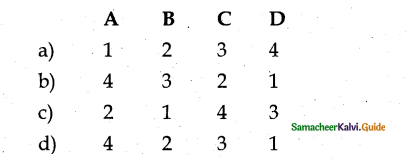
Answer:
c) 2 1 4 3
Question 2.
a) Acid Rain – 1) Sound pollution
b) Eutrophication – 2) Water pollution
c) Oil spills – 3) Air pollution
d) Hearing loss – 4) Depletion of oxygen on water
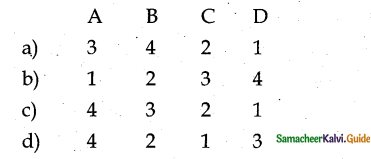
Answer:
c) 4 3 2 1
Question 3.
a) Production sector – 1) F = W2
b) House hold sector – 2) R = W1+ W2
c) Input = Output – 3) Final product
d) F – 4) R = F + W1
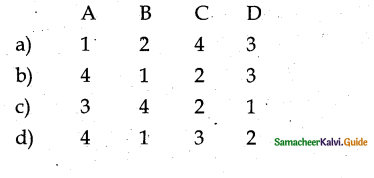
answer:
b) 4 1 2 3
III. Choose the correct pair:
Question 1.
a) Environmental Goods – Industries
b) Environmental Quality – Properties and characteristics of the Environment
c) The Air Prevention and Control of Pollution Act – 1985
d) Acid Rain – Sound pollution
Answer:
b) Environmental Quality – Properties and characteristics of the Environment.
Question 2.
a) Concentration of carbon dioxide in the pre-industrial – 380 ppm
b) Concentration CO2 in 2016 – 400ppm
c) Externalities – spillover effects
d) Organic farming – Chemical Fertilizers
Answer:
c) Externalities – spillover effects
![]()
Question 3.
a) Alkali soils – Indo – Gangetic plains
b) E – wastes – Environmental wastes
c) Ozone Layer – Infrared rays
d) Non – conventional – Petrol
Answer:
a) Alkali soils – Indo – Gangetic plains
IV.Choose the incorrect pair:
Question 1.
a) Environmental goods – Mountains, Rivers
b) Ecosystem – the foundation of the Biosphere
c) Spillover effects – Externalities
d) Negative Production Externality – beehives
Answer:
d) Negative Production Externality – beehives
Question 2.
a) Concentration of carbon dioxide in the pre-industrial – 38Oppm
b) Concentration CO2 in 2016 – 400ppm
c) Externalities – spillover effects
d) Organic farming – Chemical Fertilizers
Answer:
c) Externalities – spillover effects
![]()
Question 3.
a) Alkali soils – Indo – Gangetic plains
b) E – wastes – Environmental wastes
c) Ozone Layer – Infrared rays
d) Non – conventional – Petrol
Answer:
Answer:
a) Alkali soils – Indo – Gangetic plains
IV.Choose the incorrect pair:
Question 1.
a) Environmental goods – Mountains, Rivers
b) Ecosystem – the foundation of the Biosphere
c) Spillover effects – Externalities
d) Negative Production Externality – beehives.
Answer:
d) Negative Production Externality – beehives.
Question 2.
a) Non – conventiõnal fuels – Biogas, CNG, LPG
b) Eutrophication – the bloom of algae in the water
c) Indoor air pollution – cooking with solid fuels on open fires
d) Industrial wastes – Noise pollution.
Answer:
d) Industrial wastes – Noise pollution
![]()
Question 3.
a) Oil spills – Seawater gets polluted
b) Trees – CO2 emission
c) Sustainable Development – economic growth, social inclusion, and environmental protection.
d) Organic farming – crop rotation
Answer:
b) Trees – CO2 emission
V. Choose the correct Statement:
Question 1.
a) Average temperatures around the world have risen by 1°c over the last 100 years.
b) Global warming reduces the level of greenhouse gases.
c) Vehicles smoke happens to release high amounts of carbon monoxide.
d) Trees absorb oxygen from the air and release carbon dioxide.
Answer:
c) Vehicles smoke happens to release high amounts of carbon monoxide.
Question 2.
a) Water pollution increases the oxygen level in the water
b) Pollution is the introduction of contaminants into the natural environment.
c) Beneficial externalities are called “positive externalities”.
d) Environment is a private good.
Answer:
b) Pollution is the introduction of contaminants into the natural environment.
![]()
Question 3.
a) Environmental goods are typically non – market goods.
b) Positive production externalities include pollution generated by a factory that ’ imposes costs on others.
c) The term environment has been derived from the Greek word “Environia” which means to surround.
d) The relationship between the economy and pollution is explained in the form of a “Material Balance Models”.
Answer:
a) Environmental goods are typically non-market goods.
VI. Choose the incorrect statement
Question 1.
a) Acid rain is one of the consequences of Air pollution.
b) Sustainable Development includes economic growth, social inclusion, and environmental protection.
c) Trees release oxygen and pollutes the air.
d) Chronic exposure to noise may cause noise-induced hearing loss.
Answer:
c) Trees release oxygen and pollutes the air
Question 2.
a) Increasing temperature in the atmosphere leads to global warming.
b) Ozone layer is responsible for protecting humans from harmful ultraviolet rays.
c) Earth’s ozone layer is depleting due to the presence of chlorofluorocarbons and hydrochlorofluorocarbons in the atmosphere.
d) Atmospheric pollution increases the level of ozone.
Answer:
d) Atmospheric pollution increases the level of ozone.
![]()
Question 3.
a) Surface water includes natural water found on the earth’s surface, like rivers, lakes, lagoons, and oceans.
b) Eutrophication is an increased level of oxygen in water bodies.
c) CO2 is the most important of the greenhouse gases contributing to 50% of global warming.
d) ‘Problem soils’ exist mainly in arid and semi-arid regions.
Answer:
b) Eutrophication is an increased level of oxygen in water bodies.
VII. Pick the odd one out:
Question 1.
a) Sea pollution
b) Air pollution
c) Land pollution
d) Water pollution
Answer:
a) Sea pollution
Question 2.
a) BlOGAS
b) Petrol
c) CNG
d) LPG
Answer:
b) Petrol
![]()
VIII. Analyze the Reason:
Question 1.
Assertion (A): “E-waste ” is the new by-product of the Info-Tech society.
Reason (R): E-waste can be generated as the result when consumer, business, and household devices are disposed or sent for recycling.
Answer:
a) Assertion (A) and (R) both are true, and (R) is the correct explanation of (A).
Question 2.
Assertion (A): Solid waste is basically the discharge of useless and unwarranted materials as a result of human activity.
Reason (R): Solid waste consists of the discards of households, hospital refuse, dead animals, debris from a construction site, etc.,
Answer:
b) Assertion (A) and Reason (R) both are true, but (R) is not the correct explanation of (A).
![]()
Question 3.
Assertion (A): Global warming is the current increase in temperature of the Earth’s surface as well as its atmosphere.
Reason (R): The increase in the number of greenhouse gases warms the earth’s surface.
Options:
a) Assertion (A) and (R) both are true, and (R) is the correct explanation of (A).
b) Assertion (A) and Reason (R) both are true, but (R) is not the correct explanation of (A).
c) (A) is true but (R) is false.
d)Both (A) and (R) are false.
Answer:
a) Assertion (A) and (R) both are true, and (R) is the correct explanation of (A).
IX. 2 Marks Questions
Question 1.
Define “Solid wastes”?
Answer:
Solid Wastes:
- Non-liquid, non-soluble materials, ranging from municipal garbage to industrial wastes that contain complex, and hazardous, substances.
- Solid wastes include sewage sludge, agricultural refuse, demolition wastes, and mining residues.
Question 2.
Draw the flow diagram for Material Balance Approach.
Answer:

Question 3.
Define “Sustainable Development”?
Answer:
- Sustainable Development is a development that meets the needs of the present generation without compromising the ability of future generations to meet their own needs.
- “The alternative approach (to sustainable development) is to focus on natural capital assets and suggest that they should not decline through time.”
Question 4.
What is pollution?
Answer:
Pollution is the introduction of contaminants into the natural environment that causes an adverse change in the form of life, toxicity, of environmental damage to the ecosystem and aesthetics of our surroundings.
![]()
Question 5.
Define “Deforestation”?
Answer:
- Humans depend on trees for many things including life.
- Trees absorb carbon dioxide from the air and release Oxygen, which is needed for life.
- Forest helps replenish soils and helps retain nutrients being washed away.
- Deforestation is led to land pollution.
Question 6.
What are the causes of Air pollution?
Answer:
- Vehicle exhaust smoke
- Fossil fuel-based power plants
- Exhaust from industrial plants and factories
- Construction and Agricultural Activities
- Natural causes
- Household activities.
![]()
Question 7.
What are the effects of Air pollution?
Answer:
- Respiratory and heart problems
- Acid rain
- Eutrophication
- Effect on wildlife
- Depletion of the ozone layer
- Human Health
- Global warming
Question 8.
What are the remedial measures to control Air pollution?
Answer:
- Establishment of industries away from the towns and cities.
- Increasing the length of the chimneys in Industries.
- Growing more plants and trees.
- Use of non – conventional fuels like Biogas, CNG, and LPG.
- Use of Mass Transit system.
![]()
Question 9.
What are the types of water pollution?
Answer:
- Surface water pollution
- Groundwater pollution
- Microbiological pollution.
- Oxygen depletion pollution
Question 10.
What are the remedial measures to control water pollution?
Answer:
- Comprehensive water management plan.
- Construction of proper storm drains and settling ponds.
- Maintenance of drain life.
- Effluent and sewage treatment plant.
- Regular monitoring of water and wastewater.
- Stringent actions towards illegal dumping of waste into the water bodies.
![]()
Question 11.
Define Noise Pollution.
Answer:
Noise pollution is unwanted or excessive sound that can have deleterious effects on human health and environmental quality. Noise pollution is commonly generated by many factories. It also comes from the highway, railway, and airplane traffic and from outdoor construction activity.
Question 12.
Name the types of Noise Pollution.
Answer:
- Atmospheric Noise
- Industrial Noise
- Man-made Noise
![]()
Question 13.
What are the causes of Noise Pollution?
Answer:
- Poor urban planning
- Sounds from motor vehicles
- Crackers
- Factory machinery
Question 14.
What are the effects of Noise Pollution?
Answer:
- Hearing Loss
- Damage physiological and psychological health.
- Cardiovascular effects.
- Detrimental effect on animals and aquatic life.
- Effects on wildlife and aquatic animals.
![]()
X. 3 Mark Questions
Question 1.
Explain the types of Noise pollution?
Answer:
Types of Noise Pollution:
(I) Atmospheric Noise:
Atmospheric noise or static is caused by lightning discharges in thunderstorms and other natural electrical disturbances occurring in the atmosphere.
(II) Industrial Noise:
- Industrial noise refers to noise that is created in factories.
- When sound becomes noise it becomes unwanted.
- Heavy industries like shipbuilding, iron, and steel have long been associated with Noise-Induced Hearing Loss (NIHL).
(III) Man-made Noise:
The main sources of man-made noise pollution are ships, aircraft, seismic exploration, marine construction, drilling, and motorboats.
Question 2.
State the Effect of Land Pollution.
Answer:
- Soil pollution
- Healthy Impact
- Cause for Air pollution
- Effect on wildlife.
Question 3.
State the remedial measures to control Land Pollution.
Answer:
- Making people aware of the concept of a Reduce, Recycle, and Reuse.
- Buying biodegradable products.
- Minimizing the usage of pesticides
- Shifting cultivation.
- Disposing of unwanted garbage properly either by burning or by burying it under the soil.
- Minimizing the usage of plastics.
![]()
Question 4.
Define sustainable development.
Answer:
“Sustainable development is a development that meets the needs of the present without compromising the ability of future generations to meet their own needs” World commission of Environment and Development, 1987.
Question 5.
What is alkali soil?
The occurrence of accumulation of excess salt/ acid in the root zone results in a partial or complete loss of soil productivity and such soil is defined as ‘Problem (alkali, saline, acid) soils’.
This soil exists mainly in arid and semi-arid regions.
Question 6.
What is Acid – rain?
Answer:
- Acid rain is one of the consequences of air pollution.
- The emissions from factories, cars, or heating boilers contain nitrogen oxides, sulphur dioxide, and sulphur trioxide.
- These oxides when mixed with rainwater become sulfurous acid, nitric acid, and sulfuric acid and come down to earth as acid rain.
![]()
Question 7.
What is organic farming?
Answer:
- Organic farming is a system of agricultural production which relies on animal manure, organic waste, crop rotation, legumes, and biological pest control.
- It avoids the use of synthetic fertilizer, pesticides, and livestock additives.
- Organic inputs have certain benefits, such as enriching the soil for microbes.
XI. 5 Mark Questions
Question 1.
Name the sources of E-waste.
Answer:
|
Home |
Hospitals | Government |
Private sectors (Restaurants |
| 1.PC | 1.PC | 1. PC | 1.PC |
| 2. Television | 2. Monitors | 2. Fax machine | 2. Boilers |
| 3. Radio | 3. ECG device | 3. Xerox machine | 3. Mixer |
| 4. Cellphones | 4. Microscope | 4. Scanner | 4. Signal Generators. |
| 5. Washing machine | 5. Incubator | 5. Fan | 5. Incubator |
| 6. Microwave oven | 6. Tube lights | ||
| 7. CD Player | 7. Air conditioners | ||
| 8. Fan | |||
| 9. Electronic Iron |
Question 2.
Write a note on solid waste.
Answer:
- Solid waste is basically the discharge of useless and unwarranted materials as a result of human activity.
- Most commonly, they are composed of solids, semisolids, or liquids.
- Solid wastes consist of the discards of households, hospital refuse, dead animals, debris from a construction site, ashes, agricultural wastes, and industrial wastes, etc.
- When waste is not removed from the streets and public places in time it poses severe public – health and hygiene hazards.
![]()
Question 3.
Explain the causes of Air pollution?
Answer:
Causes of Air Pollution:
(I) Vehicle exhaust smoke:
- Vehicles smoke happens to release high amounts of Carbon monoxide.
- Millions of vehicles are operated every day in cities, each one leaving behind its own carbon footprint on the environment.
(II) Fossil fuel-based power plants:
- Fossil fuels also present a wider-scale problem when they are burned for energy in power plants.
- Chemicals like sulphur dioxide are released during the burning process, which travels straight into the atmosphere.
- These types of pollutants react with water molecules to yield something known as acid rain.
(III) Exhaust from Industrial Plants and Factories:
Heavy machinery located inside big factories and industrial plants also emits pollutants into the air.
(IV) Construction and Agricultural activities:
- Potential impacts arising from the construction debris would include dust particles and gaseous emissions from the construction sites.
- Likewise, using ammonia for agriculture is a frequent byproduct that happens to be one of the most dangerous gases affecting the air.
(V) Natural Causes:
- Earth is one of the biggest polluters itself, through volcanoes, forest fires, and dust storms.
- They are nature-borne events that dump massive amounts of air pollution into the atmosphere.
(VI) Household activities:
Household activities like cooking, heating, and lighting, use of various forms of mosquito repellents, pesticides and chemicals for cleaning at home, and use of artificial fragrances are some of the sources that contribute to air pollution.
Question 4.
What are the general principles of organic farming?
Answer:
- Protect the environment, minimize soil degradation and erosion, decrease pollution, optimize biological productivity and promote a sound state of health.
- Maintain long-term soil fertility by optimizing conditions for biological activity within the soil.
- Maintain biological diversity within the system.
- Recycle materials and resources to the greatest extent possible within the enterprise.
- Provide attentive care that promotes health and meets the behavioural needs of livestock.
- Prepare organic products, emphasizing careful processing and handling methods in order to maintain the organic integrity and vital qualities of the products at all stages of production.
- Rely on Renewable resources in the locally organized agricultural system.
![]()
